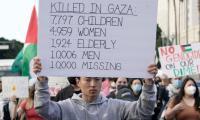Economists have invented the concept of Purchasing Power Parity (PPP). The concept enables the estimation of the exchange rate between one currency (say the rupee) and another currency (say the dollar) for the exchange to be at par with the domestic purchasing powers of these two currencies – the technique helps determine the relative value of these two currencies.
What this means is how much of a given amount of one currency has the same purchasing power to directly purchase a market basket using the other currency. In other words, PPP dollars measure what people can buy from their incomes in their own countries to enable comparisons with other countries on standards of living, by purchasing from the market the same basket of goods. We all know that the Pakistani rupee can buy more goods and services in Pakistan than the US dollar in the USA.
According to the IMF, the Indian and Pakistani rupees are highly undervalued on the basis of PPP. It argues that if a basket of goods is bought in India and the same basket is bought abroad the exchange rate would be approximately Rs17.7 while in our case the exchange rate would be roughly Rs41.33, making the rupee undervalued by more than one and half times – 155 percent!
The obvious question arising from such a revelation would be: why isn’t an undervaluation of such proportions enabling us to increase our exports to levels that will enable us to have a large surplus in our external trade account (export earnings being higher than our outflows to finance imports), whereas we have historically run large trade deficits? Why is this the case?
There are several possible explanations of this phenomenon. It could be argued that these estimates of PPP are simply incorrect. PPP may be an easy concept to understand but not easy to estimate. Consumers of different countries earn different levels of income, have different demographic structures, traditions and tastes and do not consume the same basket of goods and even within this range of goods and services consumed the quality of goods and services could be very different. Hence, it is not possible to compare the two.
Then, there are the prices of some basic consumer goods and services which are administered by government and can be lower because of subsidies, especially the suppressed price of gas. Also, a significant proportion of consumption comprises non-tradables, goods and services which cannot be imported by another country if they are costly at home, eg domestic bus, taxi, train and airplane rides, price of water in your homes, fees charged by doctors and schools, cost of different services (like haircuts, unskilled labour, general repairs and maintenance activities, etc), rental space for offices and homes, membership of clubs (especially if the land for facilities has been provided by the government, as in our case, at a subsidised rate), etc.
The most well-known PPP indicator for laypersons is The Economist’s Big Mac Index, referring to a product that is literally similar but being sold at different prices worldwide. The exchange rate would be computed such that it would make the price of this identical product the same the world over. If a Big Mac is sold for $4.79 and its cost in Pakistan today is Rs350, the equivalent dollar price of the Big Mac in Pakistan is 3.31 suggesting that the Pakistani rupee is undervalued by 31 percent, giving an equivalent PPP exchange rate of Rs73. If this is indeed the case why hasn’t Pakistan been unable to expand its exports?
A major reason for this could be Pakistan’s weak competitiveness owing to matters other than price. For example: a) government policies and tax and regulatory regimes that discourage the development of an environment for export expansion while protecting and incentivising import-substituting industries; and b) the low productivity of our labour and other factors and inputs of production used per unit of output-our productivity being substantially lower than that of China, etc.
Another key factor is that we consume far more energy per unit of GDP – more than twice the world average and in excess of five times as much as in countries where energy is highly taxed, like Britain, requiring more efficient use of energy resources.
The government also needs to gradually eliminate the subsidies that it provides on inputs like water and energy (particularly gas), etc by replacing price-support with income-support and changing the way welfare is delivered rather than playing around with the amount spent on initiatives like subsidies which burden an already stressed budget, distort price structures and disincentivise the efficient use of scarce resources.
The writer is a former governor of the State Bank of Pakistan.
Email: shahid.kardar@gmail.com
Earth Day protests carry a vital message that is relevant 365 days a year. — AFP File Earth Day is celebrated every...
People walk along a market in Lahore on May 17, 2023. — AFP/FileMany of us had hoped that the general election...
Packs of freshly printed $20 notes are processed for bundling and packaging at the US Treasury's Bureau of Engraving...
People stand in line up as election officials check their ballot papers during voting general election at a polling...
Women show their voter identity cards as they stand in a queue before casting their votes in Agartala. — PTIThe 18th...
Former prime minister Imran Khan. — Instagram/ imrankhan.ptiAn old saying has it that “when you dance with the...







